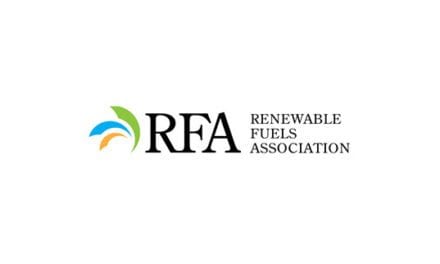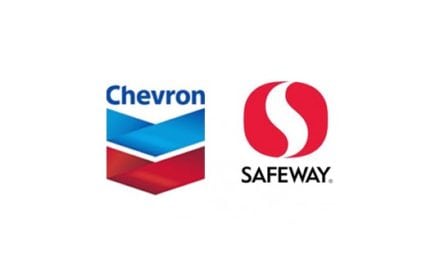An updated road map and forecast of future oil prices is published monthly by Paul Kuklinski. It reviews the recent events which moved oil prices to where they are today, what just happened and why. It then indicates where they are likely to go based on current analysis. It also identifies important checkpoints and risks which could cause oil prices to travel a different path, what should we look out for. To read the full article, contact [email protected] for a 12 month subscription at an introductory price of $995.
The Saudis Are Determined
It is focused on surplus oil inventories.
WTI crude is $61/B, with a $4/B discount to Brent. WTI increased 36% from $49/B in 4Q16 when OPEC announced its agreement with Russia and other non OPEC producers to cut production to the late January peak near $67/B. It averaged $51/B in 2017 and $43/B in 2016. The Brent premium blew out to over $7/B in December and has contracted since. Brent averaged $3.10/B higher than WTI in 2017 and $2.45/B higher in 2016.
How we got here
The run-up in crude to the January peak mirrored the decline in surplus OECD inventories targeted by the OPEC cut. The OECD surplus to the 5 year average declined 84% from 318 million barrels (MMB) in early 2017 when the cut was implemented to 50 MMB in January by OPEC’s estimate. The IEA calculates a surplus of 53 MMB, down from 264 MMB a year ago. The OECD accounts for 48% of total world oil demand.
OPEC is pleased with its performance and the result. Compliance over the period has been high. February production was 32.10 million barrels per day (MMBD) compared to an average of 32.34 MMBD in 2017. It is 1.3 MMBD less than 33.40 MMBD produced in 4Q16 when the cut was announced.
OPEC’s June meeting will be a checkpoint
Saudi Arabia recently said it “hopes OPEC and its allies (primarily Russia) will be able to relax production cuts next year and create a permanent framework to stabilize oil markets after the current agreement on supply cuts ends.” It said it hopes to announce a `new target’ at OPEC’s next full meeting June 22nd in Vienna. OPEC and Russia account for 45% of world crude supply. The OPEC meeting will provide a very important checkpoint for US producers and the market in general, underline very. Oil traders may choose to be cautious until the meeting.
The Saudis plan to cut March and April production by 100 MBD from 9.98 MMBD in February and keep exports below 7 MMBD as it “remains focused on working down excess oil inventories.” It may continue to cut in May.
Higher oil prices would benefit its historic initial public offering of Saudi Aramco shares expected sometime in 2019. It requires $70/B Brent to balance its state budget in 2018.
Where the road is pointing
In the run-up to the OPEC meeting, oil prices are likely to remain relatively stable the next few months because the seasonal increase in inventories will be quite small.
For OPEC, the outlook for 2H18 is both promising and challenging. Demand growth is very strong. It is projected to increase in the 2nd half of this year by 1.4 MMBD from 99.0 MMBD in 2Q18 to 100.4 MMBD in 4Q18.
Non OPEC production growth is also very strong. US liquids production is projected to increase 935 MBD over the same period. Other non OPEC supply adds 700 MBD, primarily from Brazil, Canada, and Kazakhstan, where the super giant Kashagan Field is expected to reach 370 MBD from 250 MBD at the end of 2017.
Inventories are likely to remain relatively balanced the rest of the year stabilizing oil prices near current levels. Downside oil price risk may emerge in 4Q18 however from a potential acceleration in the growth of Permian production.
For the year, the IEA estimates world oil demand will average 99.3 MMBD, up 1.5 MMBD from 2017, following an increase of 1.57 MMBD in 2017 and 1.22 MMBD in 2016. China, India, and Africa lead demand growth. Global economic growth is strong. Since 2015, global oil demand has grown about 5 MMBD, twice as fast as the previous 3 years.
For the year, US oil and liquids production will average 15.01 MMBD, up 1.96 MMBD Y/Y, following an increase of 702 MBD in 2017 and a decline of 348 MBD in 2016. In 4Q18, it may reach 15.78 MMBD, a level which may put downward pressure on oil prices.
Permian oil production is likely to increase well over 30% this year, about 930 MBD, to average 3.35 MMBD, with a December exit rate of 3.85 MMBD based on an anticipated flattening of the Permian rig count around 450 in May or June. The current Permian rig count is 436, up from 398 in December. The production estimate is supported by guidance provided by the 10 largest producers in the basin. They accounted for 35% of Permian oil production in 2017.
All other US oil production will increase about 490 MBD in 2018 while gas liquids increase 540 MBD. Higher oil prices this year are stimulating increased drilling activity.
The Permian Basin is the main growth driver in 2H18. The cost per well continued to decline in 2017. New wells are producing double or more the initial rate that for years was the standard for a `good’ unconventional well, significantly improving return on investment for producers and reducing the oil price needed to breakeven after offsetting the cost of oilfield services inflation. The new US tax law will reduce breakevens in US resource plays by $2/B and $4/B on average in the Gulf of Mexico. Permian oil production will account for 31% of US oil production in 2018.
In 2018, other non OPEC production will average 45.22 MMBD, up 227 MBD from 2017, following a 32 MBD decline in 2017 and a 433 MBD decline in 2016.
 Paul Kuklinski has selected equity investments in the energy sector for major institutional investors for over 30 years. In his experience, the future price of oil is the dominant investment variable. He founded Boston Energy Research in 1992 to provide independent research to large financial institutions. He was previously a Partner at Cowen & Company and a founding Partner of Harvard Management Company, which in the 1970s built a weighting over 50% in the energy sector in the Harvard Endowment equity portfolio. It generated substantial realized gains.
Paul Kuklinski has selected equity investments in the energy sector for major institutional investors for over 30 years. In his experience, the future price of oil is the dominant investment variable. He founded Boston Energy Research in 1992 to provide independent research to large financial institutions. He was previously a Partner at Cowen & Company and a founding Partner of Harvard Management Company, which in the 1970s built a weighting over 50% in the energy sector in the Harvard Endowment equity portfolio. It generated substantial realized gains.








